Abstract
Two series of interferon-inducing complexes containing polyriboinosinic and polyribocytidylic acids, poly-L-lysine, and carboxymethyl cellulose were prepared. One series contained carboxymethyl cellulose, 27,000-molecular-weight poly-L-lysine, and either 4S, 6S, or 9S polyriboinosinic and polyribocytidylic acids. The other series contained carboxymethyl cellulose, 9S polyriboinosinic and polyribocytidylic acids, and poly-L-lysine, whose molecular weights ranged from 2,000 to 27,000. The homogeneity of these double-stranded polynucleotide complexes was confirmed by single-step thermal denaturation profiles and by single peaks in sucrose gradient velocity sedimentation. The complexes have a greater resistance to hydrolysis by ribonuclease than does polyriboinosinic-polyribocytidylic acid. The resistance to ribonuclease increased with the increasing size of polynucleotide homopolymers and poly-L-lysine. In monkeys and, to a lesser extent, in mice, serum interferon levels induced by the different complexes were related to the degree of resistance of the complexes to hydrolysis by ribonuclease. In mice, 4S, 6S, and 9S complexes of polyriboinosinic-polyribocytidylic acid, poly-L-lysine, and carboxymethyl cellulose had a higher level of toxicity than did polyriboinosinic-polyribocytidylic acid as measured by 50% lethal dose. The toxicity was parallel to the ribonuclease resistance of the complexes. It was concluded that an increase in the size of the polynucleotides and the polyamino acids in these complexes leads to higher resistance to hydrolysis by ribonuclease and to greater interferon responses in mice and rhesus monkeys.
Full text
PDF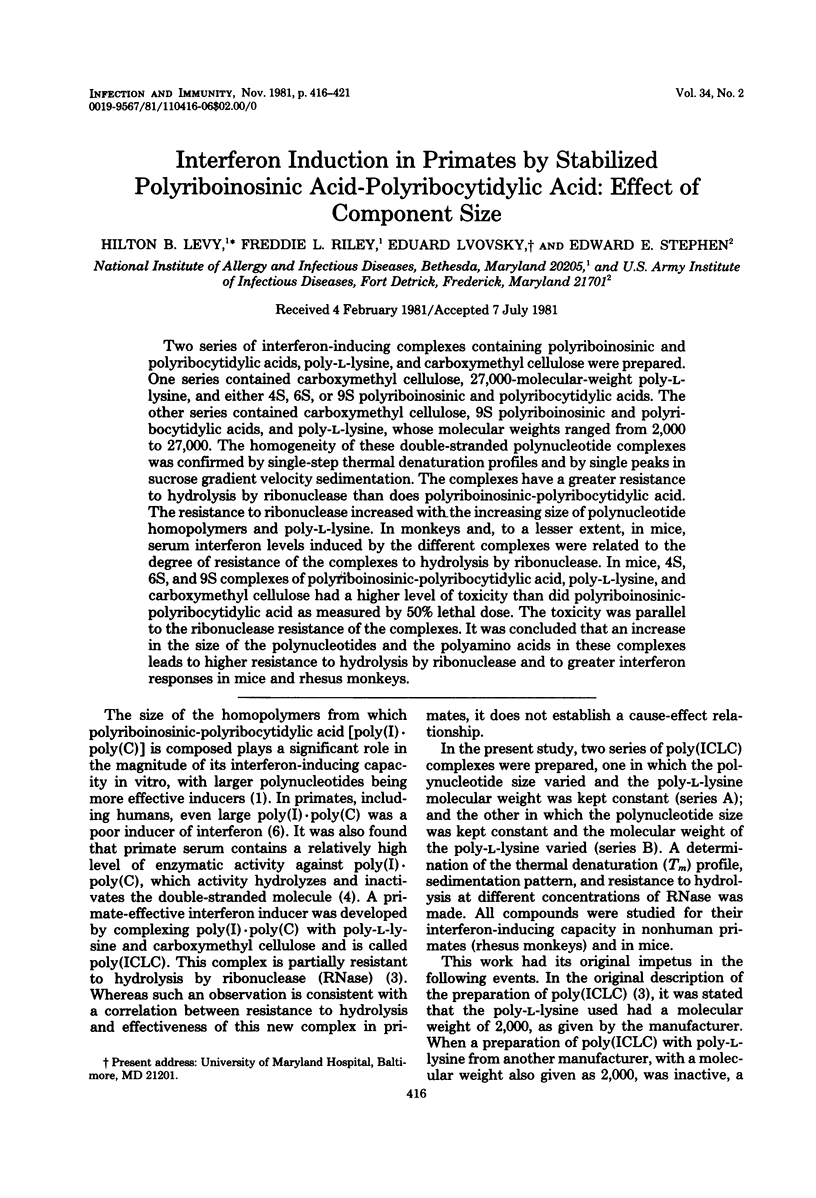
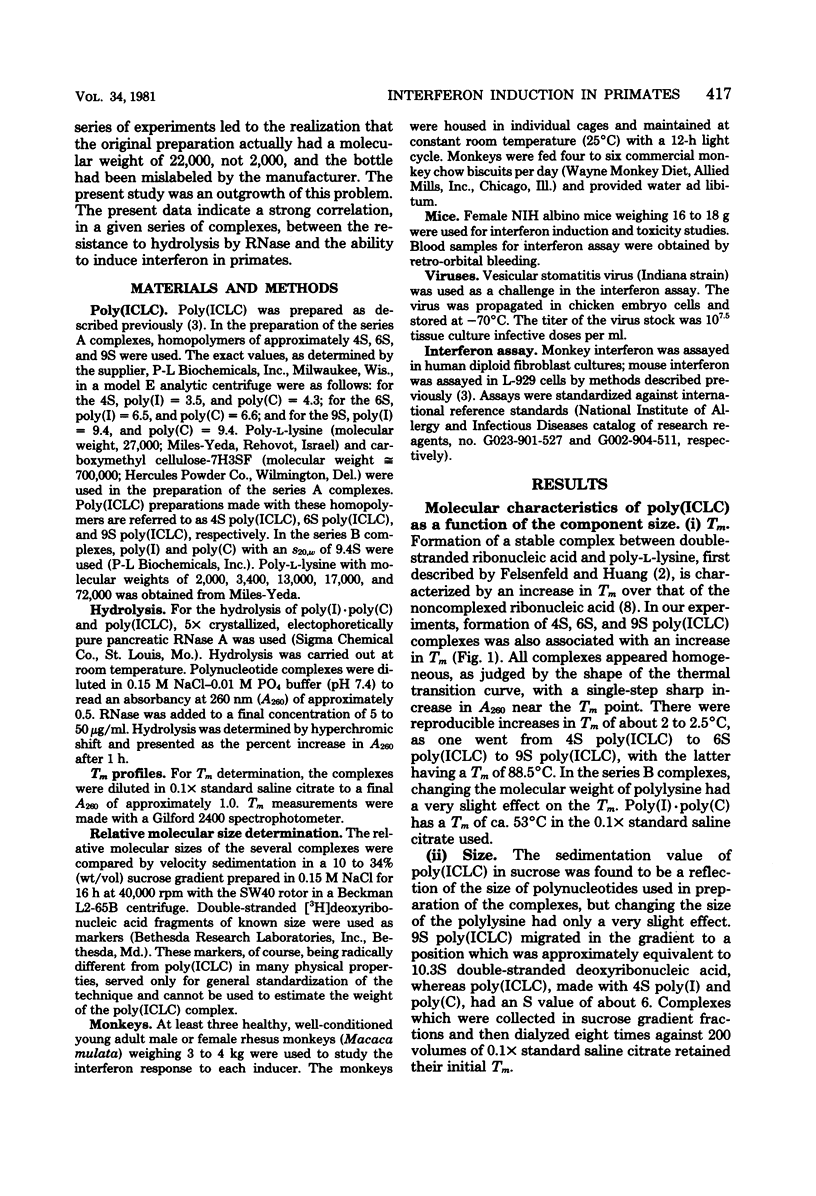
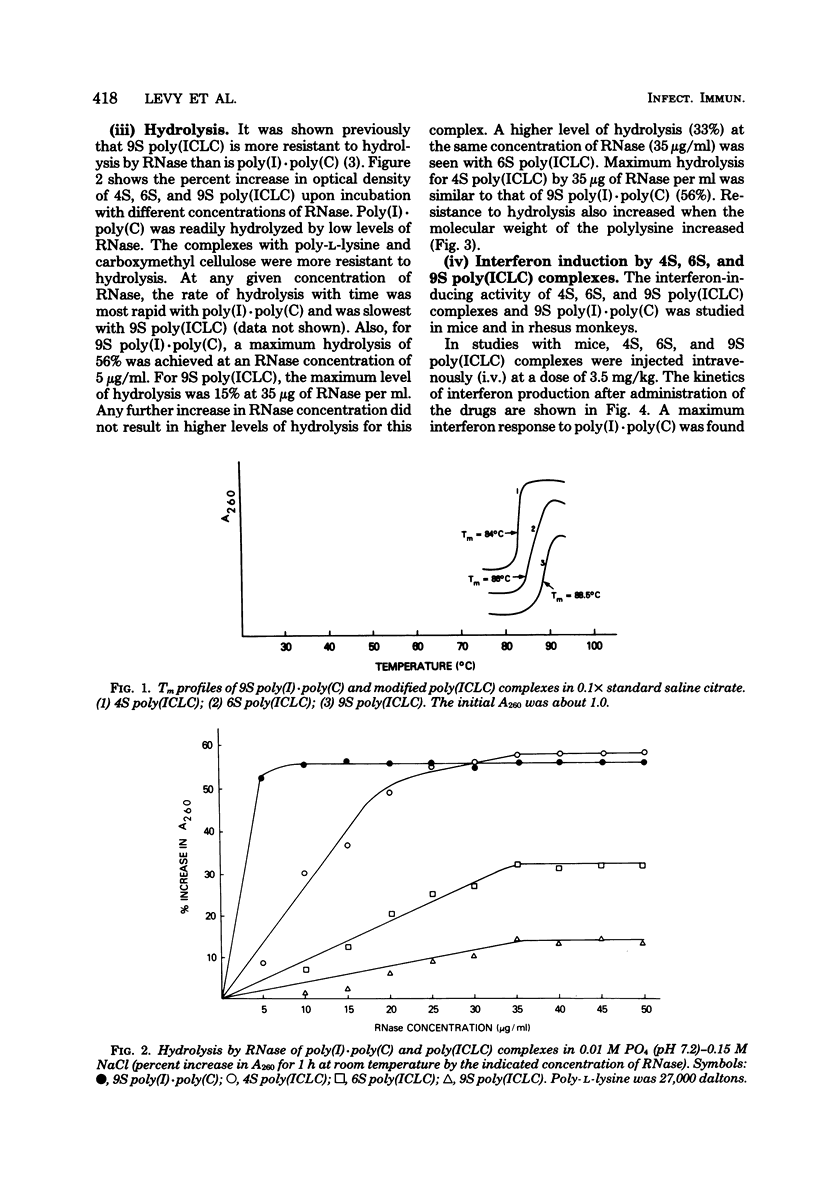
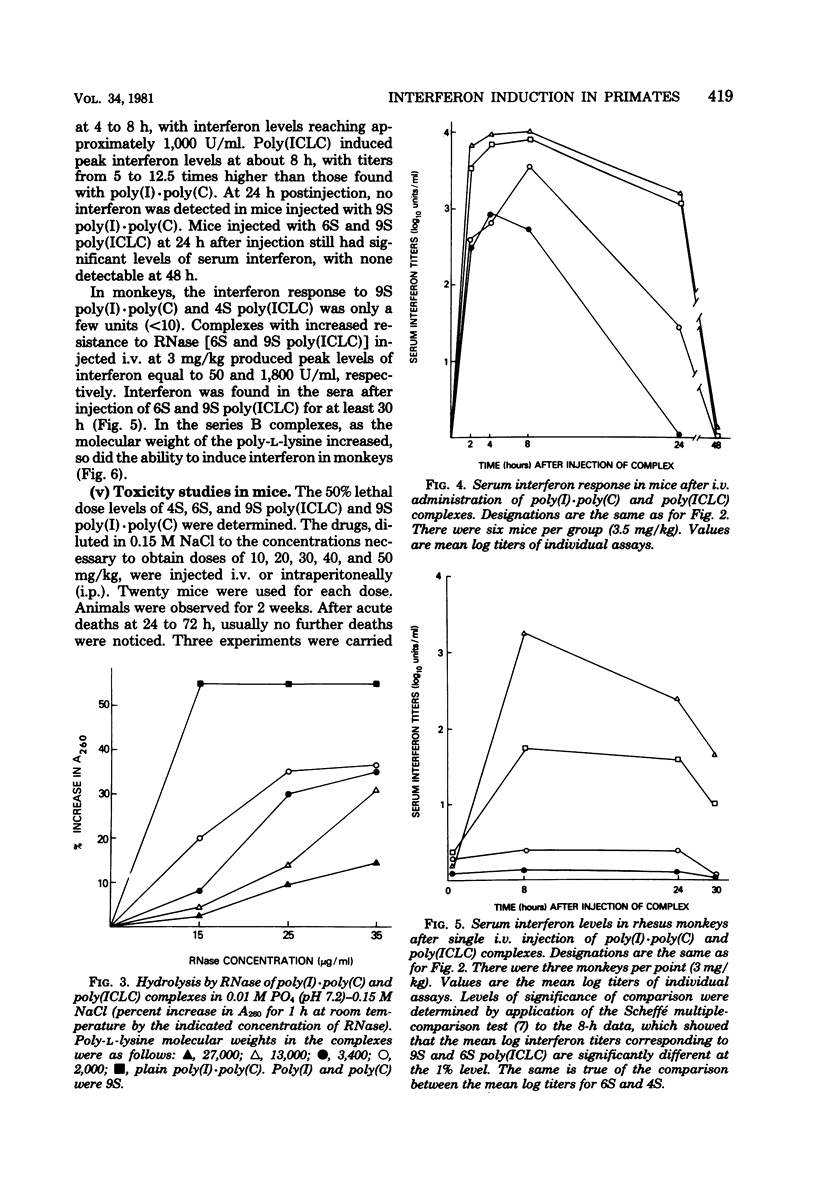
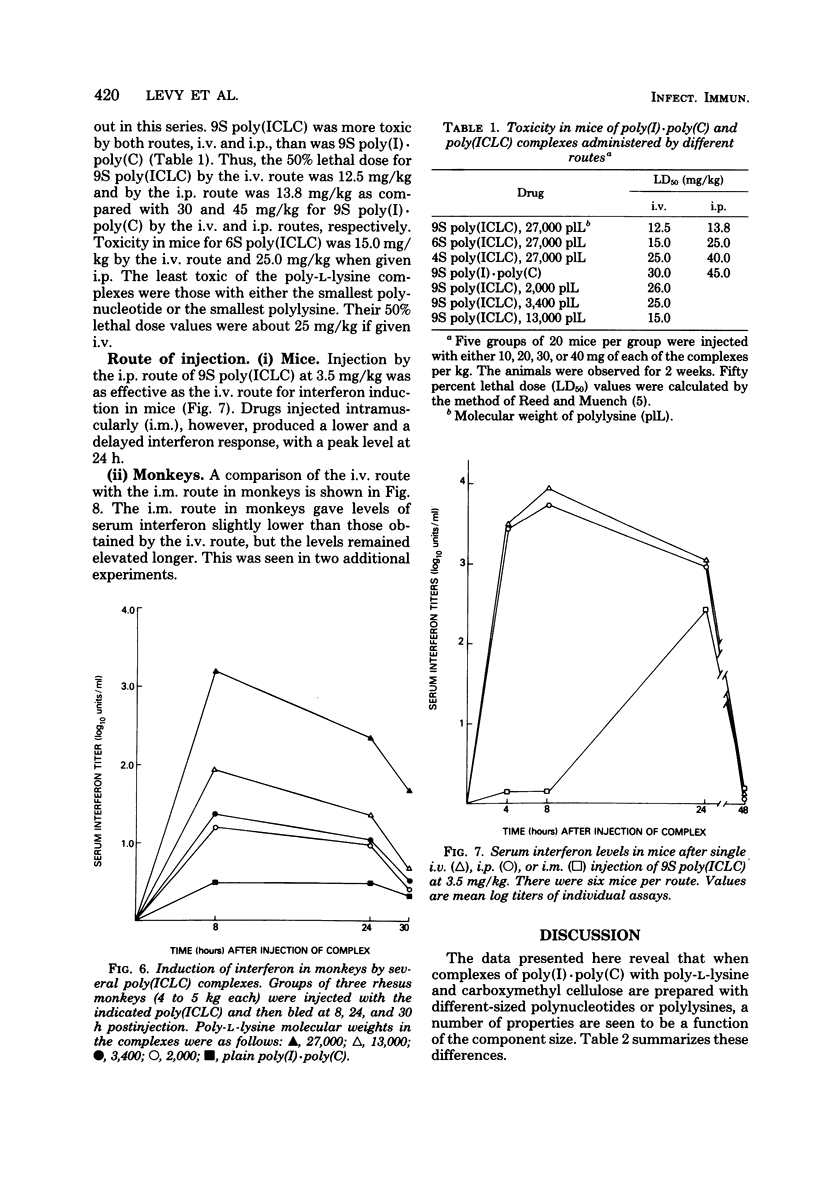
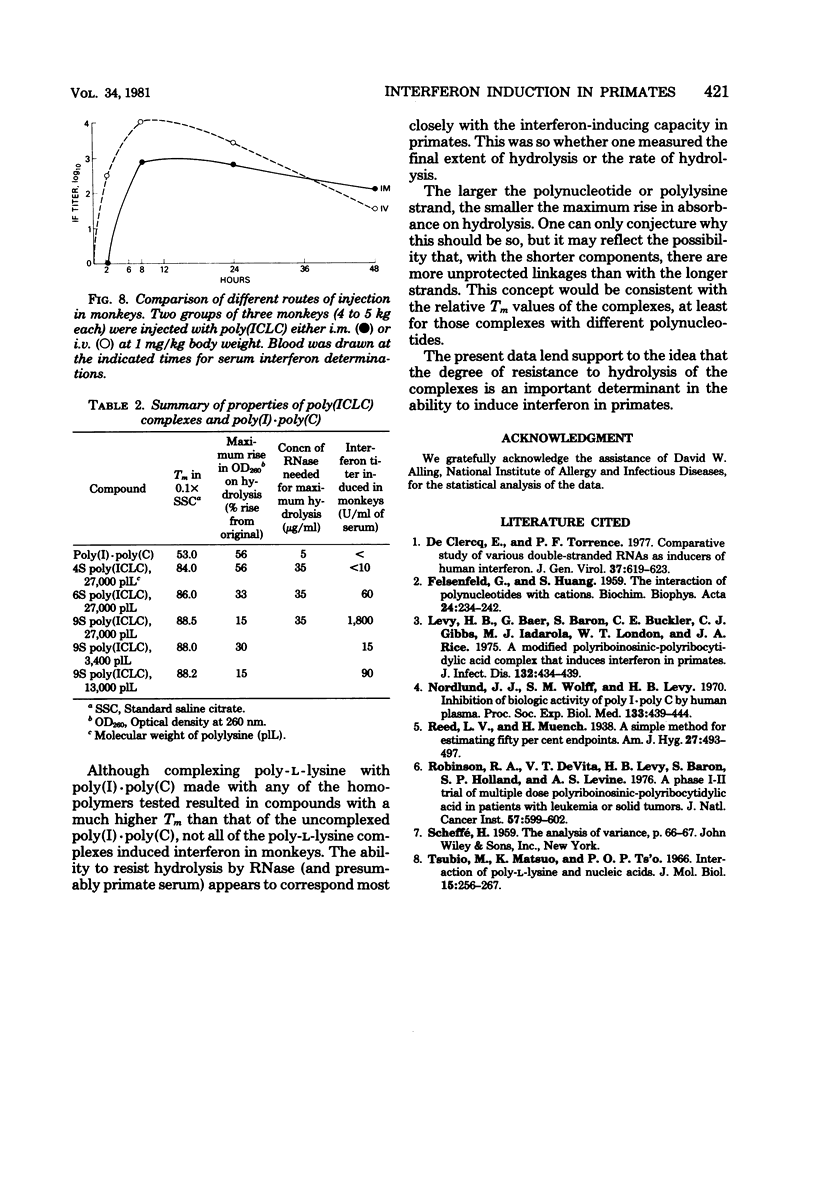
Selected References
These references are in PubMed. This may not be the complete list of references from this article.
- FELSENFELD G., HUANG S. The interaction of polynucleotides with cations. Biochim Biophys Acta. 1959 Jul;34:234–242. doi: 10.1016/0006-3002(59)90253-7. [DOI] [PubMed] [Google Scholar]
- Levy H. B., Baer G., Baron S., Buckler C. E., Gibbs C. J., Iadarola M. J., London W. T., Rice J. A modified polyriboinosinic-polyribocytidylic acid complex that induces interferon in primates. J Infect Dis. 1975 Oct;132(4):434–439. doi: 10.1093/infdis/132.4.434. [DOI] [PubMed] [Google Scholar]
- Nordlund J. J., Wolff S. M., Levy H. B. Inhibition of biologic activity of poly I: poly C by human plasma. Proc Soc Exp Biol Med. 1970 Feb;133(2):439–444. doi: 10.3181/00379727-133-34492. [DOI] [PubMed] [Google Scholar]
- Robinson R. A., DeVita V. T., Levy H. B., Baron S., Hubbard S. P., Levine A. S. A phase I-II trial of multiple-dose polyriboinosic-polyribocytidylic acid in patieonts with leukemia or solid tumors. J Natl Cancer Inst. 1976 Sep;57(3):599–602. doi: 10.1093/jnci/57.3.599. [DOI] [PubMed] [Google Scholar]
- Tsuboi M., Matsuo K., Ts'o P. O. Interaction of poly-L-lysine and nucleic acids. J Mol Biol. 1966 Jan;15(1):256–267. doi: 10.1016/s0022-2836(66)80225-5. [DOI] [PubMed] [Google Scholar]


